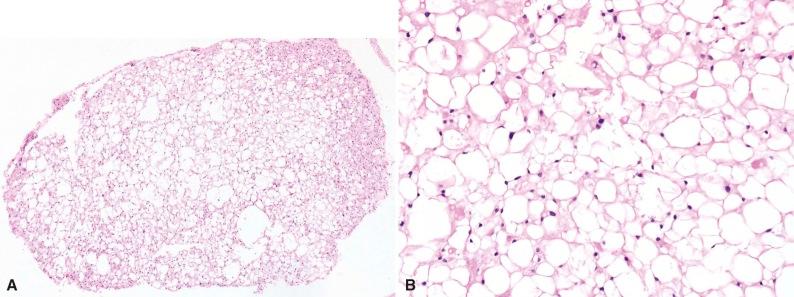Physical Address
304 North Cardinal St.
Dorchester Center, MA 02124
The notochord is a rod-shaped structure that forms during the third week of gestation and organizes formation of the axial skeleton. As vertebral bodies undergo ossification, the notochord becomes fragmented, and by the second month of development, notochordal tissue is typically only present in the intervertebral space, forming the nucleus pulposus of the intervertebral disk. Because of this process of notochordal degeneration, notochordal tissue is not normally found in the vertebral body after 10 weeks' gestation and only rarely in the intervertebral disk after 10 years of age. However, studies of human embryos and fetuses have demonstrated ectopic notochord remnants, predominantly within the cephalic and caudal ends of the notochord.
Persistent notochordal remnants in adults have also been documented, predominantly involving the clivus. Virchow and Luschka recognized notochordal remnants within the clivus at the base of the skull as early as 1856. Virchow initially regarded these lesions as cartilaginous and proposed the term ecchondrosis physaliphora . Two years later, Müller suggested these proliferations were of notochordal derivation ( ecchordosis physaliphora ), a hypothesis subsequently confirmed by experimental work done in 1865 by Ribbert. Today, it is widely accepted that notochordal remnants involving the clivus (ecchordosis physaliphora spheno-occipitalis) can be found in up to 2% of autopsies. However, there are only a few documented cases of its occurrence in adults outside of the clivus.
Today, the family of notochordal lesions includes notochordal cell remnant(s), benign notochordal tumor, and chordoma ( Table 18-1 ). Although there has been long-standing general agreement regarding the existence and significance of notochordal cell remnants at the benign end of the spectrum, and chordoma at the malignant end, the more recent concept of benign notochordal cell tumors, initially described in 2001 by Mirra and Brien as giant notochordal hamartoma , continues to evolve. The most recent World Health Organization (WHO) term for this distinct entity is benign notochordal cell tumor .
| Classic Clinical Presentation | Contrast Enhancement on MRI | Bone Destruction or Extraosseous Extension | Lobular Growth and Myxoid Matrix | Cytologic Atypia | Treatment | |
|---|---|---|---|---|---|---|
| Ecchordosis physaliphora | Incidental finding | No | No | No | No | No treatment necessary |
| Benign notochordal tumor | Pain or asymptomatic | No | No | No | No | Observation or surgical removal for symptom relief |
| Chordoma | Pain, nerve compression, bowel or bladder dysfunction | Yes | Yes | Yes | Yes | Complete surgical resection |
Ecchordosis physaliphora is notochordal tissue that persists beyond the postnatal period. The condition is also known as notochord rest, notochord cell remnant, notochordal remnant, notochord vestige, ecchordosis physaliphora spheno-occipitalis, and ecchordosis physaliphora vertebralis.
As noted above, ecchordosis physaliphora is most commonly found in the clivus at the base of the skull, where it has been found in 0.4% to 2% of autopsies. Only rare examples involving the mobile spine (ecchordosis physaliphora vertebralis) and coccygeal area have been reported. Persistent notochordal tissue within intervertebral disks, often referred to as notochordal remnants or notochordal vestiges, of adults is also very uncommon.
Patients are typically asymptomatic. Those with lesions involving the clivus occasionally experience symptoms including headaches, sensorineural hearing loss, diplopia, and hemiparesis.
Magnetic resonance imaging (MRI) of ecchordosis physaliphora demonstrates a lesion that is hypointense on T1-weighted scans and hyperintense on T2-weighted scans. It shows no enhancement after gadolinium administration. Computed tomography (CT) findings of ecchordosis physaliphora are often nonspecific but may include a stalklike structure projecting from the clivus.
The lesions are usually small, ranging in size from a few millimeters to 1 to 2 cm, but they occasionally measure as much as 3.5 cm. Grossly visible lesions appear as soft, gelatinous, and pedunculated masses that range in size from millimeters to a few centimeters.
Ecchordosis physaliphora is composed of a uniform population of tumor cells arranged in small nests or cords. Cytologically, the tumor cells contain small nuclei, granular eosinophilic cytoplasm, and intracytoplasmic vacuoles (physaliferous cells) ( Fig. 18-1 ). Although they share some histologic features with chordoma, they lack the nuclear atypia, mitotic activity, mucinous pools, and lobular infiltrative growth pattern characteristic of chordoma.

Ecchordosis physaliphora, benign notochordal tumor, and chordoma all have similar immunohistochemical features. The tumor cells are positive with antibodies directed against broad-spectrum cytokeratin and brachyury and variably positive for S-100 protein. One study found notochordal vestiges (ecchordosis physaliphora) to be negative for cytokeratin 18, whereas chordoma and benign notochordal cell tumors were positive. However, another study found differing results, suggesting that this marker may not be helpful in distinguishing these entities.
Ecchordosis physaliphora is benign and usually left untreated until symptoms occur.
Benign notochordal cell tumor is a notochordal cell intraosseous lesion of the axial skeleton with distinct histologic and radiologic features that differ from chordoma. Synonyms include benign notochordal tumor, benign notochordal lesion, giant notochordal rest, giant vertebral notochordal rest, and giant notochordal hamartoma. Rare pulmonary examples have been described.
Become a Clinical Tree membership for Full access and enjoy Unlimited articles
If you are a member. Log in here